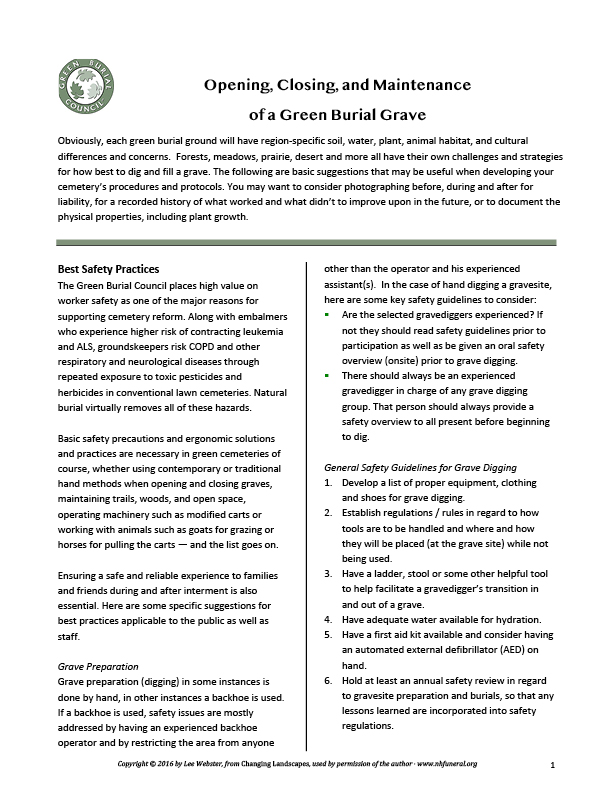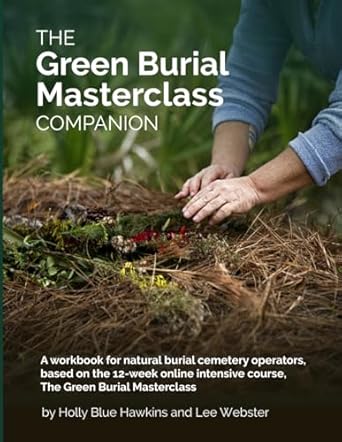Starting a Green Cemetery
Getting Started
We hear from a lot of green burial enthusiasts eager to make green burial available near them, but they don't know where to begin. It is virtually impossible to create a blueprint that will suit every region, type of cemetery, and budget, but we have done our best to cover some of the basic issues most will encounter on this page. If you're unfamiliar with the differences between hybrid, natural, and conservation cemeteries, we recommend reading What is Green Burial? first.
Green Burial Masterclass: Professional Training for a Sustainable Future
Green Burial Masterclass: Professional Training for a Sustainable Future
Offered by the Green Burial Council and Redesigning the End, the Green Burial Masterclass is the nation’s first in-depth online course focused on green cemetery management.
This 12-part, self-paced program includes 360+ lessons, expert instruction, and access to valuable resources. Upon completion, you’ll earn a Certificate of Proficiency in Green Burial Cemetery Operation—a credential that sets you apart in this growing field.
Your enrollment not only builds your expertise, it also supports future education in green burial for professionals and communities alike.
Additional Resources
If you're looking for more free resources, sign up for our Newsletter so you can keep up with our new Webinars, or head over to our Youtube channel to watch past programs. You’ll find provider specific video such as:












 Course Format
Course Format
